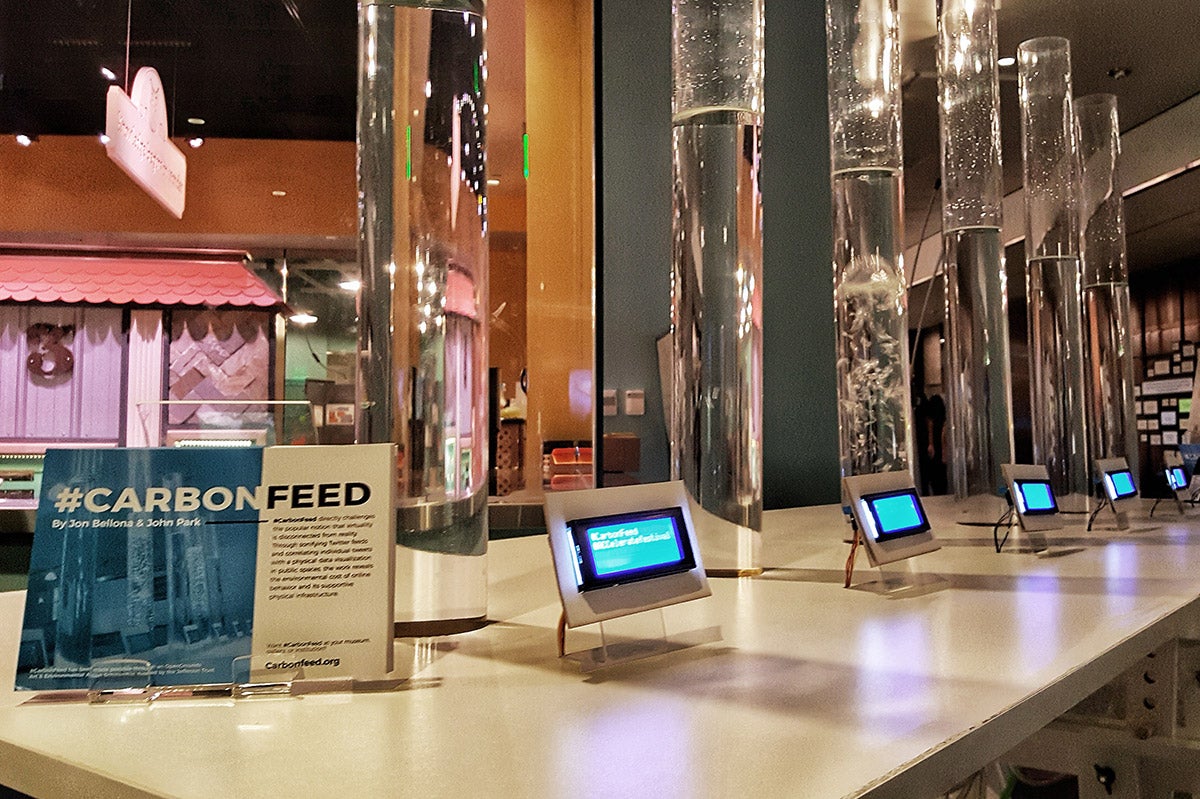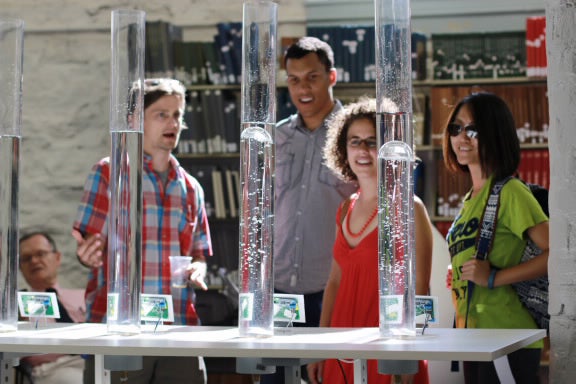Ever wondered what your Twitter feed sounds like? Or how much energy a Google search takes?
John Park has. His curiosity led him on an intellectual and creative journey culminating in a sound and art installation that, most recently, exhibited at the Smithsonian National Museum of American History in Washington, D.C.
A senior instructor in art and technology at the UO, Park teamed up with audio production instructor Jon Bellona, in the School of Music and Dance, to create #CarbonFeed, an interactive installation that “visually reveals the environmental cost of online behavior.”
#CarbonFeed takes tweets from around the world and processes them into sound and visuals in real time using compressed air and tubes of water. The resulting “sonic composition” is like watching air from scuba divers bubble upward—in six three-foot-tall, four-inch-diameter acrylic tubes.

UO instructors John Park and Jon Bellona exhibited their #CarbonFeed sound-art installation at the Smithsonian National Museum of American History in October. An estimated 35,000 people visited the museum while #CarbonFeed was installed. Photo by John Park.
“In 2014, Jon Bellona and I came up with the concept based on the idea of the carbon footprint of digital media,” Park said. “Though both of us rely heavily on computers and internet connectivity for our own creative practices, we found too few people critically looking at the environmental ‘cost’ of online behavior—including cloud computing, streaming high-definition movies, etcetera.”
Over time, they developed #CarbonFeed. The elegant, interactive sound-art installation has been on several road trips since, including to the University of Virginia, Dartmouth College, Bowdoin College, James Madison University and elsewhere. In mid-October, the Smithsonian National Museum of American History featured #CarbonFeed as part of its Accelerate Festival.
The installation’s intent isn’t to guilt people about their data use but simply to inform and, hopefully, to inspire.
“It is impossible to exist without having some effect on the planet,” Park said, noting that greenhouse gases include more than carbon dioxide. “Methane, nitrous oxide, and refrigerant gases are also greenhouse gases. The term C02e means carbon dioxide equivalent, or the climate change impact of all greenhouse gases caused by a behavior or product.”
That’s where #CarbonFeed comes in, as a means to help people visualize how the small things we do can have large impacts on the planet over time.
“Even simple online interactions generate carbon emissions,” Park said. “Sending a tweet generates .02 grams of carbon dioxide equivalent. A Google search has been estimated to generate 0.2 grams of CO2E. Data centers alone account for 2 percent of the US’s electricity consumption. Understanding C02e impact in the things that we do and buy, whether they are online, in the local store, or across the world can help us to make big changes in our carbon impact while still allowing ourselves to not sweat the small stuff.”
David Bellona contributed to the creation of #CarbonFeed. The project was funded through the University of Virginia and an OpenGrounds Art & Environmental Action Scholarship funded by the Jefferson Trust.

Visitors watch #CarbonFeed register tweets and Google searches in real time.
